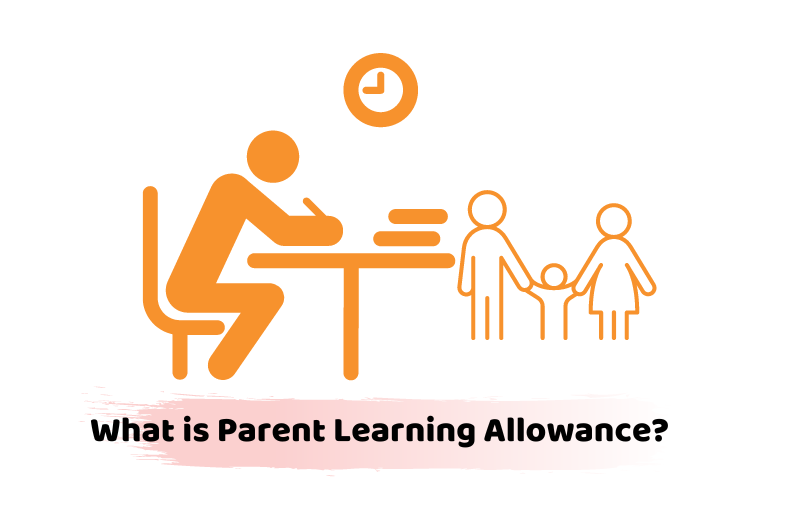Join us as we explore the intricacies of an optimal director’s salary in the UK!
In this article, we’ll talk about the following:
- Minimum Wage
- Personal allowances & Tax Rates
- Dividends Allowances & Tax Rates
- Employment Allowances & N.I Threshold
- Optimal Salary for directors – Companies with one employee
- Optimal Salary for directors – Companies with two or more employees
- Dividends
1. Minimum Wage
On 6 April 2022, the National Minimum Wage and National Living Wage rates for all age bands and for apprentices have increased. The following rates will be applicable from 6th April 2022.
| Rate from April 2022 | Current rate (April 2021 to March 2022) | Increase | |
| National Living Wage | £9.50 | £8.91 | 6.6% |
| 21-22 Year Old Rate | £9.18 | £8.36 | 9.8% |
| 18-20 Year Old Rate | £6.83 | £6.56 | 4.1% |
| 16-17 Year Old Rate | £4.81 | £4.62 | 4.1% |
| Apprentice Rate | £4.81 | £4.30 | 11.9% |
| Accommodation Offset | £8.70 | £8.36 | 4.1% |
As some of you will have employees on an hourly basis. Therefore, the next payslip we generate will have an updated (April 2022) hourly rate.
2. Personal Allowances & Tax Rates:
The personal allowances (tax-free amount) for 2022/23 is £12,570 – this means your first £12,570 of income is tax-free, the higher tax band has increased to £50,270.
For income above this, the tax rates are as below (these do not apply to dividends which are explained below):
- £12,570 to £50,270 20%
- £50,270 to £150,000 40%
- £150,001 + 45%
Scottish resident taxpayers have slightly different tax bands for 2022/23, here:
- £12,570 to £14,732 19%
- £14,732 to £25,688 20%
- £25,688 to £43,662 21%
- £43,662 to £150,000 41%
- £150,000 + 46%
3. Dividends Tax & Allowances:
The dividends tax rates are all the same for UK Taxpayers, which are as follows.
The dividend allowance remains at £2,000 (same as 2021/22) – this means the first £2,000 of your dividends are tax-free.
Over and above this £2,000, the dividend income is taxed as follows:
- If you have any unused personal allowance (£12,570), that element is tax-free
- Any dividends in the basic tax band (up to £50,270) attract a tax charge of 8.75%
- Dividends above the basic tax band (over £50,270) are charged at 33.75%
- Any dividends in the upper tax band (£150,000+) are taxed at 39.35%.
Hypothetically, if your only income was dividend income, you could receive £14,570 of tax-free dividend income on 22/23. Which is a combination of both your £12,570 personal allowance and also the £2,000 dividend allowance.
4. Employment Allowance & N.I Threshold:
The introduction of the employment allowance in April 2014 enabled employers not to pay the first £4,000 of the employer’s national insurance, which is now increased to £5000. It means you’ll pay fewer employers’ Class 1 National Insurance each time you run your payroll until the £5,000 has gone or the tax year ends (whichever is sooner).
Typically, the employment allowance means that it is the most tax-efficient directors’ salary 2022/23 to the tax-free personal allowance level (£12,570 for 2022/23). HMRC announced that from 2016/17, the employment allowance would not be available to companies where the only person on the payroll is a director, i.e., Single director employees’ limited companies.
Therefore, the optimal director’s salary for 2022/23 will depend on whether or not the employment allowance is available. As always, we would advise that you discuss your specific circumstances with a professional or us before taking any action, here are some key assumptions we have made in this Newsletter.
- You are a UK resident taxpayer with a standard personal allowance.
- Your only source of income is your salary and dividends from your limited company.
- There are other potential taxes affecting issues that we have not covered in this article, including student loan repayments, child benefit high-income tax charge and the withdrawal of the personal allowance once your income exceeds £100,000
- You are not working inside IR35.
When it comes to tax-efficient salary levels for 2022/23, there are now three national insurance thresholds you need to be aware of:
Lower Earnings Limit – as long as you pay a salary above this, you are protecting your entitlement to future state pension and benefits without paying any national insurance. For 22/23 this is £533 per month, £6,396 for the year.
Primary Threshold 06th April 2022 to 5th July 2022 – if you earn above this you have to start paying national insurance – for 2022/23 this is £823 per month, £9,876 for the year.
Primary Threshold 06th July 2022 to 5th April 2023 – if you earn above this you have to start paying national insurance – for 2022/23 this is £1,047.50 per month, £12,570 for the year.
Secondary Threshold – if you earn above this your business has to start paying national insurance – for 2022/23 this is £758 per month, £9,100 for the year.
5. Optimum Director Salary for Sole Director & Only Employee of the Company – Employment Allowances not Available.
If you’re the sole director and pay yourself a salary through your own limited company, the best amount to pay yourself is £9,096 per annum (or £758 a month). This is because:
- It’s at the secondary threshold so your company won’t need to pay employer’s NI on it.
- This salary is lower than the primary threshold, so you won’t need to pay employee’s NI.
- It’s above the Lower Earnings Limit, so you will still earn NI credits, which is great news for your state pension.
- This is less than the tax-free Personal Allowance threshold, i-e £12,750.
- You cannot claim Employment allowances as a sole director. A sole director cannot claim the Employment Allowance.
- The salary is deductible for corporation tax purposes (generating a tax saving for the company about £1,728.24) (£9,[email protected]%).
Please note, dividends should always be transferred separately and must have a payment reference as ‘’Dividends’’.
6. The Employment Allowance is Available – For Two or More Directors.
Having 2 or more directors on the company payroll means that you’re eligible to claim the Employment Allowance.
In 2022/23 the primary threshold will increase mid-year. This means that the point at which you start paying employee’s NI will be £9,880 until July 2022, when the threshold increases to £12,570. Over the year, the optimum salary in a company with two or more directors is £11,908.
Therefore, you should draw a monthly salary of £992.00 /month.
7. Dividends:
Dividends don’t count as business costs towards your corporation tax calculation, but shareholders may have to pay income tax if the payment they receive exceeds the dividend allowance. With regards to dividends, assuming you wish to take dividends up to the higher tax band but no further, then this would leave you with £41,174.00 of dividend headroom (£50,270 higher tax band – £9,096 salary).
The personal tax on dividends of £41,174.00 would total £3,124 –see below:
- £3,474 of the dividends are in the tax free personal allowance (£12,570 less £9,096 salary)
- £2,000 of the dividends are in the tax free dividend allowance
- This then leaves the balance of dividends totalling £35,700 to be taxed at 8.75% = £3,124
In a nutshell, if you take salary & dividends at the basic rate tax band, your personal tax liability will be £3124.00 on a combined income of £50,270.
Kindly Act Now:
Kindly ensure, you change the standing order for the director’s salary if you were taking a different salary last month (or last tax year). You will be taking a new salary, according to the suitable options explained above. Furthermore, kindly confirm to your payroll/account manager what option you are going for so that we can run April 2022 payroll smoothly without any interruption.
Important note: Kindly ensure you transfer the correct salary every month from your business to your personal account.
Please feel free to contact us if you have any questions or need further information.





















































